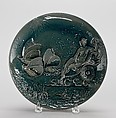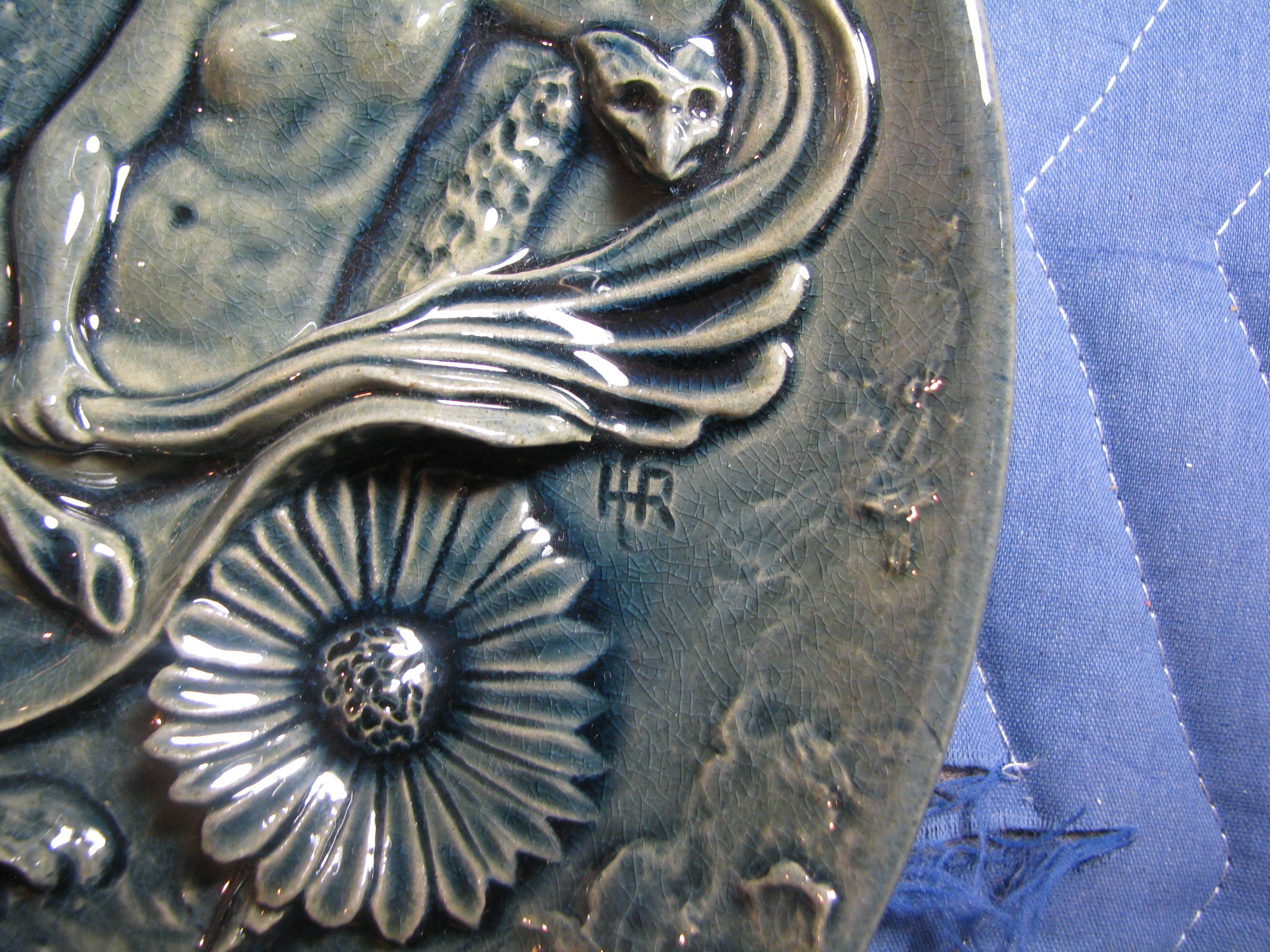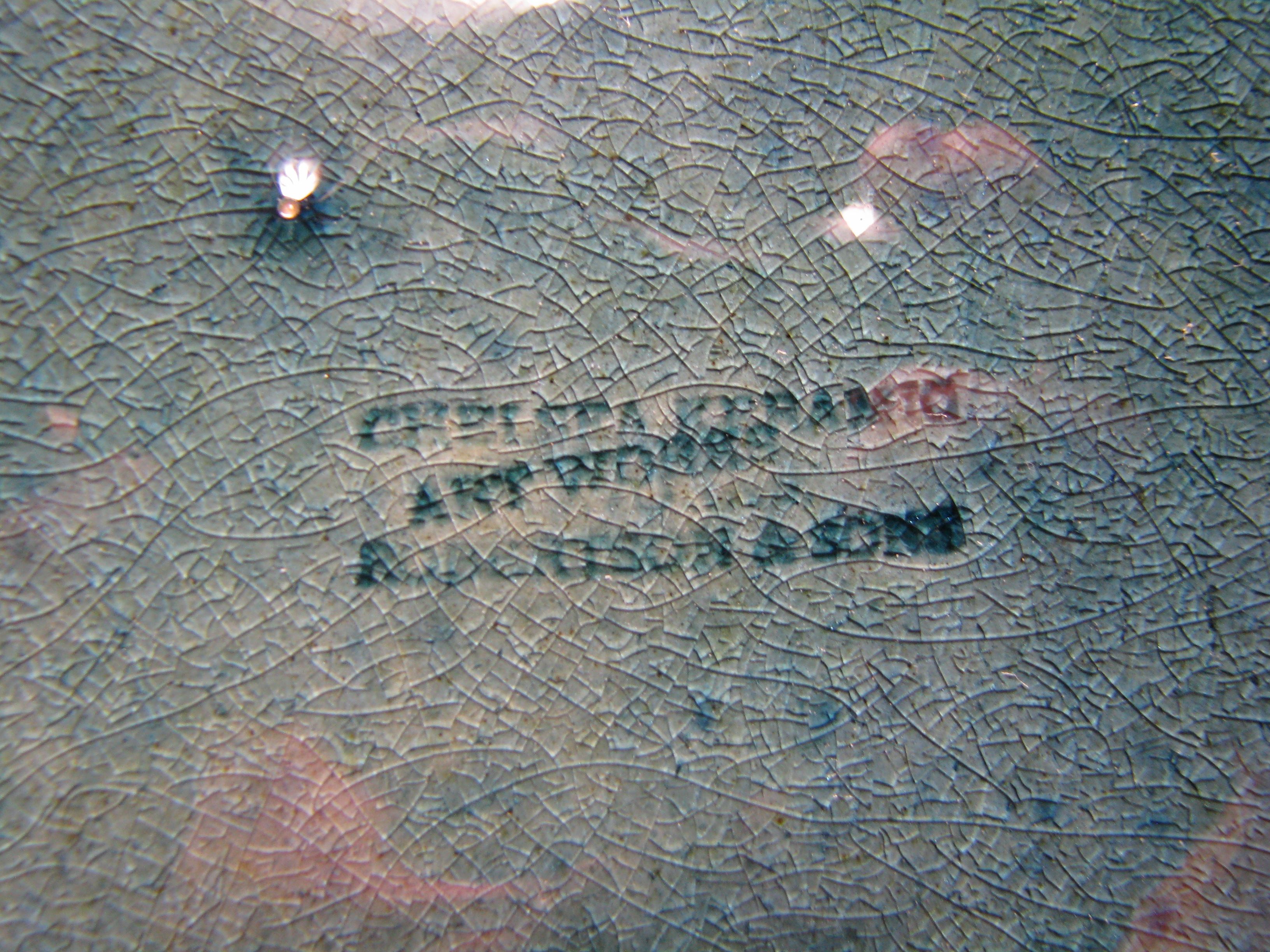Plaque
Manufacturer Chelsea Keramic Art Works American
Hugh C. Robertson
The Chelsea Keramic Art Works was the first American ceramics firm to designate itself an "art pottery." It was founded in Chelsea, Massachusetts, by members of the Robertson family, all of whom had honed their skills in the ceramics industry in Britain before coming to this country. Robertson worked in low and high relief, on vases, plaques, and tiles. This plaque features a high relief depiction of a goddess in a chariot with wheels as sunflowers and drawn by three butterflies. It is an interpretation of the classical story of the triumph of Clytie, the nymph who fell in love with Helios and was transformed into a sunflower. The sunflower also resonated with the prevailing taste of the Aesthetic Movement, for which the sunflower was one of its iconic images. The scene likely derived from an illustration in a contemporary publication.
This vase is from the Robert A. Ellison Jr. Collection of American art pottery donated to the Metropolitan Museum in 2017 and 2018. The works in the collection date from the mid-1870s through the 1950s. Together they comprise one of the most comprehensive and important assemblages of this material known.
This image cannot be enlarged, viewed at full screen, or downloaded.
This artwork is meant to be viewed from right to left. Scroll left to view more.





